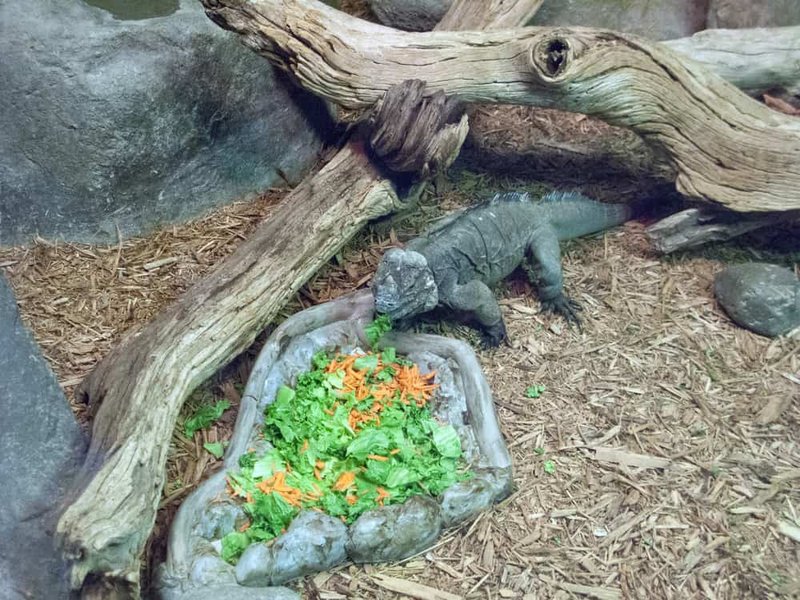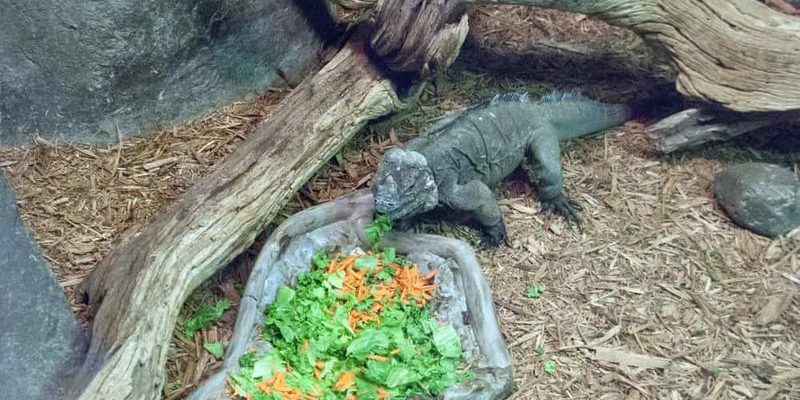
Imagine you’re at a buffet filled with colorful fruits and greens, and that’s pretty much what a rhino iguana feels like every day! But unlike your plate, their meals are targeted to meet their specific nutritional needs. Let’s dive into the world of rhino iguanas and explore what exactly goes onto their menu.
Understanding the Rhino Iguana’s Natural Habitat
To grasp what rhino iguanas eat, it’s essential to consider their natural habitat. These reptiles are native to the Caribbean islands of the Bahamas and the Greater Antilles. In the wild, they thrive in tropical forests, scrublands, and areas filled with lush vegetation.
Here’s the thing: the climate and environment greatly influence their diet. In the wild, they nibble on a variety of plants, fruits, and flowers. Imagine a picnic under a tropical tree, surrounded by vibrant greens and juicy fruits. That’s the kind of feast rhino iguanas experience daily!
The availability of different food sources can change depending on the season, which means that these iguanas have adapted their tastes to whatever is fresh and available. This adaptability helps them survive and stay healthy in varying conditions.
What Do Rhino Iguanas Eat in the Wild?
In their natural habitat, rhino iguanas are primarily herbivores. You might be wondering, “What does that mean?” Well, they mainly eat plants! Here’s a breakdown of their preferred food choices:
- Fruits: They enjoy a variety of fruits, especially those that are bright and ripe. Think bananas, mangoes, and figs.
- Vegetables: Leafy greens are a staple. They munch on collard greens, kale, and the occasional dandelion leaves.
- Flowers: Yes, they eat flowers too! Hibiscus and other blooms bring a splash of color to their diet.
- Succulents: Some rhino iguanas also enjoy munching on cactus pads, which provide hydration and fiber.
By consuming these foods, they get a good mix of vitamins and minerals essential for their health. Just like we feel energized after a balanced meal, rhino iguanas thrive on their plant-based diets.
Feeding Rhino Iguanas in Captivity
If you’re lucky enough to have a rhino iguana as a pet, you might be asking, “How do I feed my new friend?” It’s crucial to replicate their natural diet as closely as possible. Here’s how to do it:
1. Fresh Vegetables: Offer a variety of leafy greens like collard and mustard greens daily. You can also include bell peppers and zucchini for some crunch.
2. Fresh Fruits: Treat your iguana with fruits like papaya, strawberries, and apples, but remember to serve them in moderation due to their sugar content.
3. Hydration: Always provide access to fresh water. You might be surprised to know that many iguanas hydrate through their food, especially when eating juicy fruits!
4. Avoid Processed Foods: Stay away from processed foods or animal proteins, as these can harm their health. Think of it like feeding a classic pizza to a health-conscious friend—definitely a no-go!
With a little planning, you can create a colorful, varied diet for your rhino iguana that mirrors their natural eating habits.
Common Nutritional Needs of Rhino Iguanas
Like us, rhino iguanas need a variety of nutrients to stay healthy. Here’s a closer look at what they require:
– Calcium: This is crucial for bone health. They can get calcium from dark leafy greens, calcium supplements, or cuttlebone. Think of calcium as the building blocks for a strong iguana skeleton.
– Vitamin D3: Essential for calcium absorption, iguanas can synthesize this vitamin from UVB lighting, so it’s vital they have access to it if they’re kept indoors.
– Fiber: A diet rich in fiber helps their digestive systems function smoothly. High-fiber greens and fruits help prevent digestive issues.
By meeting these nutritional needs, you’ll ensure your rhino iguana is not just surviving but thriving.
Picky Eaters and Food Preferences
One interesting aspect of rhino iguanas is that they can be picky eaters. You might find that your pet iguana turns its nose up at certain foods. Don’t take it personally! Here’s how to handle those finicky eating habits:
– Variety is Key: Keep offering different foods, as they might surprise you and suddenly decide they like something they previously ignored.
– Presentation Counts: Sometimes, how you present the food can make a difference. Cutting fruits and vegetables into fun shapes can make them more appealing.
– Observe and Adapt: Pay attention to what your iguana enjoys and modify the diet accordingly. If they love strawberries but only occasionally nibble on greens, try mixing them together.
Remember, patience is important. Over time, your rhino iguana might develop a fondness for a more varied menu.
Signs of a Healthy Diet
So, how do you know if you’re feeding your rhino iguana correctly? Here are some signs of a healthy iguana diet:
– Good Weight: They should have a healthy weight—not too thin and not overweight. A healthy rhino iguana has a well-defined body shape.
– Active Behavior: A well-fed iguana is usually more active and curious. If your iguana is exploring its environment, that’s a great sign of good health!
– Healthy Shedding: Regular shedding is a sign of a healthy diet. Look for clean, smooth shed skin; flaky or dull skin might indicate a diet deficiency.
– Bright Eyes and Alertness: Healthy iguanas have clear, bright eyes. If they seem lethargic or their eyes appear dull, it might be time to reevaluate their diet.
By keeping an eye on these signs, you can ensure that your rhino iguana is living its best life.
Feeding a rhino iguana might seem daunting at first, but with a little knowledge and creativity, you can create a delightful menu for your pet. Their natural diet consists of a variety of fruits, vegetables, and flowers, and replicating this in captivity is key to keeping them healthy.
Remember to focus on diversity and nutritional balance. With patience and careful observation, you’ll figure out what your iguana loves to eat. Before you know it, you’ll be a pro at preparing their meals, ensuring they thrive just like they would in the wild.
Enjoy the journey of being a rhino iguana owner, and take pride in knowing you’re contributing to their health and happiness one meal at a time!

